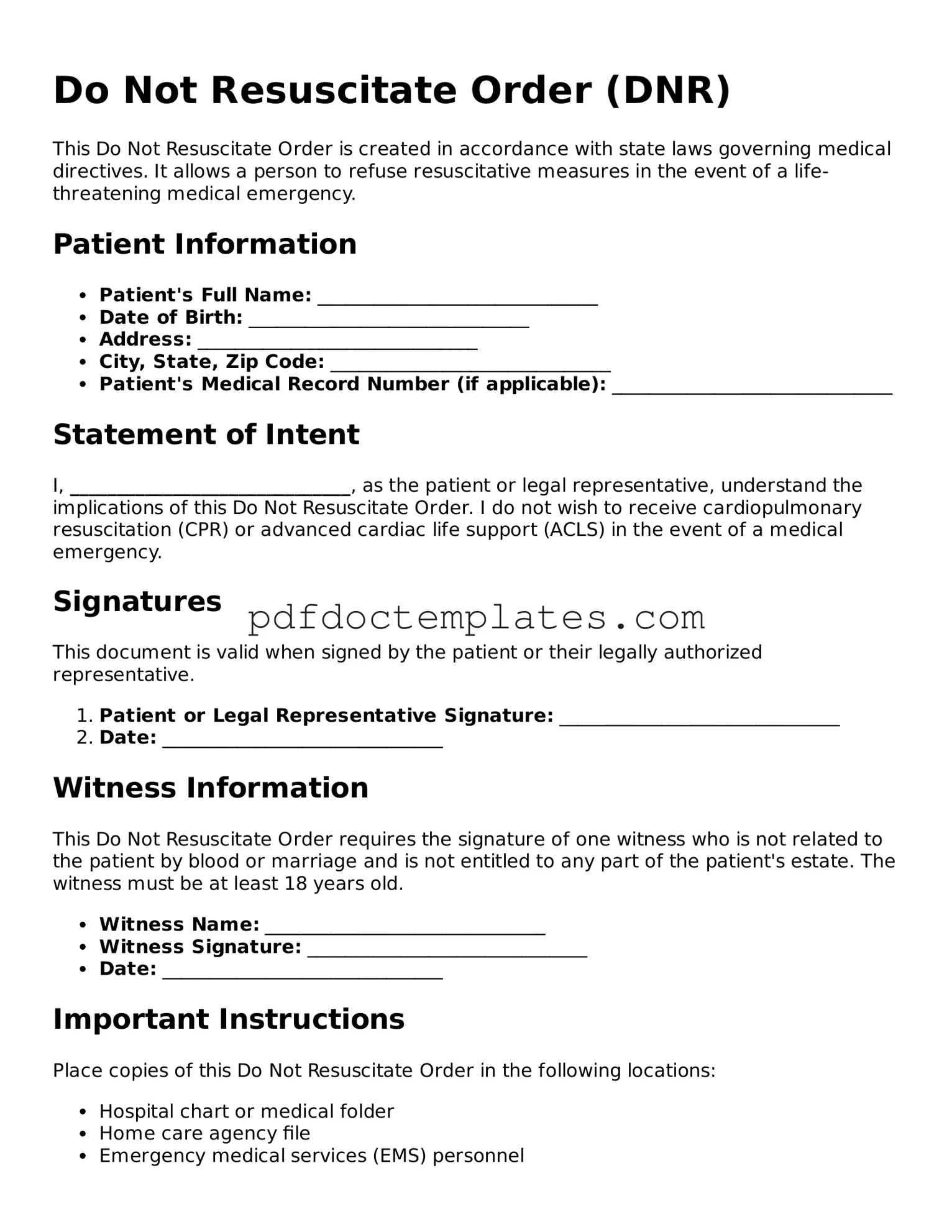Do Not Resuscitate Order (DNR)
This Do Not Resuscitate Order is created in accordance with state laws governing medical directives. It allows a person to refuse resuscitative measures in the event of a life-threatening medical emergency.
Patient Information
- Patient's Full Name: ______________________________
- Date of Birth: ______________________________
- Address: ______________________________
- City, State, Zip Code: ______________________________
- Patient's Medical Record Number (if applicable): ______________________________
Statement of Intent
I, ______________________________, as the patient or legal representative, understand the implications of this Do Not Resuscitate Order. I do not wish to receive cardiopulmonary resuscitation (CPR) or advanced cardiac life support (ACLS) in the event of a medical emergency.
Signatures
This document is valid when signed by the patient or their legally authorized representative.
- Patient or Legal Representative Signature: ______________________________
- Date: ______________________________
Witness Information
This Do Not Resuscitate Order requires the signature of one witness who is not related to the patient by blood or marriage and is not entitled to any part of the patient's estate. The witness must be at least 18 years old.
- Witness Name: ______________________________
- Witness Signature: ______________________________
- Date: ______________________________
Important Instructions
Place copies of this Do Not Resuscitate Order in the following locations:
- Hospital chart or medical folder
- Home care agency file
- Emergency medical services (EMS) personnel
Ensure that your medical provider has a copy of this order in your medical record.
